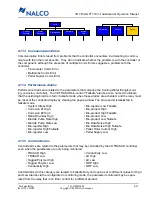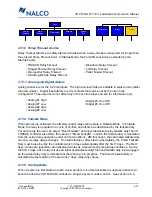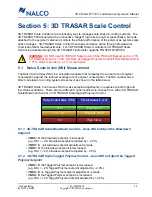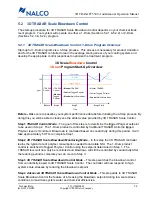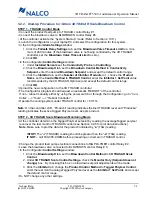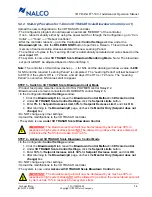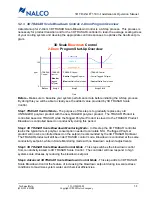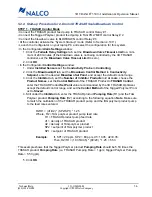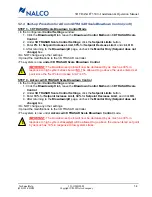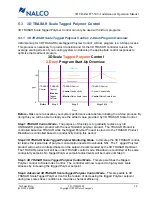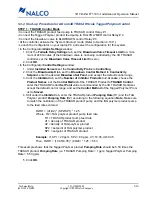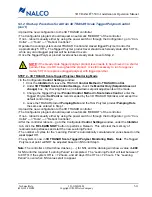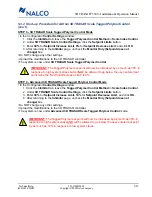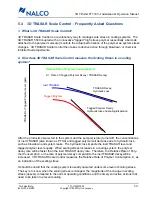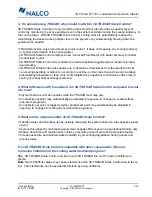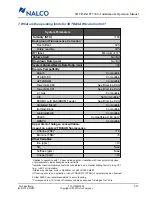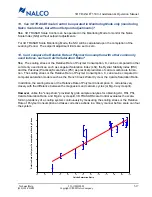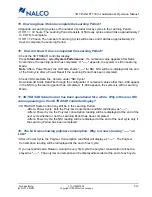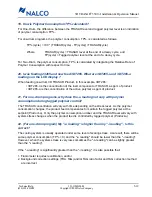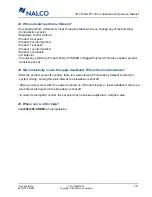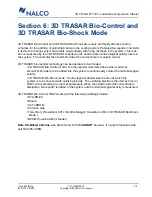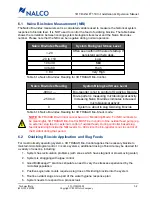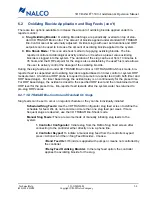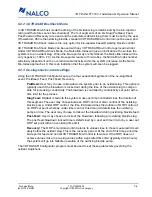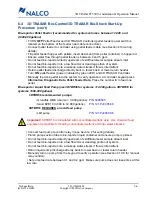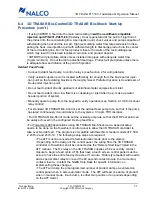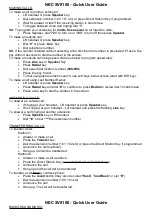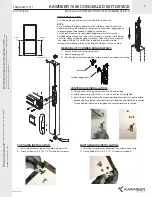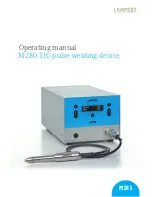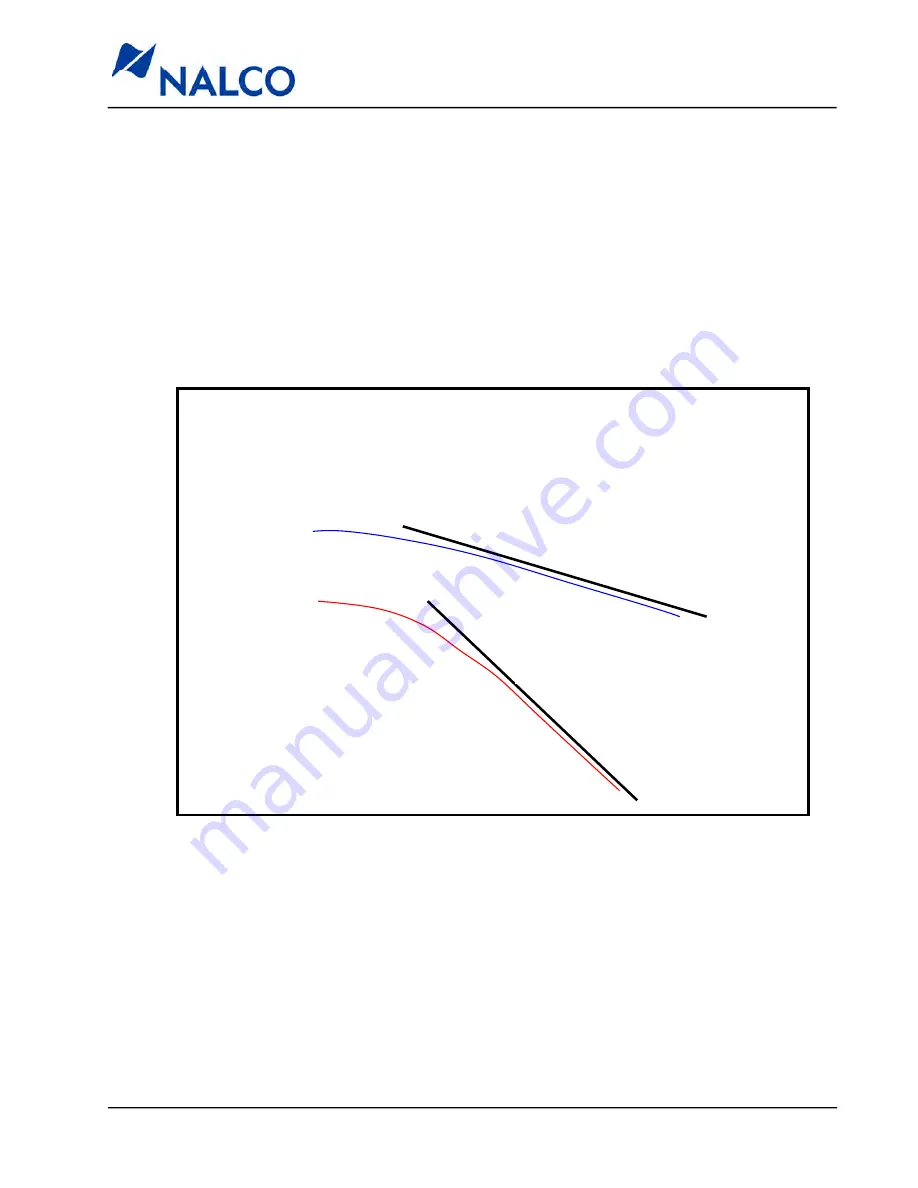
521-OM0108.88
Copyright
2009 Nalco Company
5-13
Technical Help
(630) 305-CHEM
3D TRASAR
5500 - Installation & Operation Manual
5.4
3D TRASAR Scale Control - Frequently Asked Questions
1. What is 3D TRASAR Scale Control?
3D TRASAR Scale Control is a revolutionary way to manage scale stress in cooling systems. The
3D TRASAR 5500 coupled with an innovative "tagged" high stress polymer (essentially a barcode
attached to the polymer molecule) monitors the actual performance of the polymer as system stress
changes. 3D TRASAR Scale Control then takes corrective action through blowdown or chemical
inhibitor feed adjustments.
2. How does 3D TRASAR Scale Control measure the Scaling Stress in a cooling
system?
Relative Rate of Polymer Consumption, K
K = Rate of (Tagged Polymer Decay / TRASAR Decay)
TRASAR Decay:
Hydraulic Loss
Tagged Polymer Decay:
Hydraulic loss and scaling/dispersion
Inert TRASAR
Tagged Polymer
TRASAR or Tagged Polymer Level (ppm)
After the product(s) is(are) fed to the system and the pump(s) is(are) turned off, the concentrations
of inert TRASAR (also known as PTSA) and tagged polymer will decrease due to hydraulic loss,
such as blowdown and system leaks. The hydraulic loss impacts the inert TRASAR level and
tagged polymer level equally. When scaling stress increases in a cooling system, the polymer
decay rate will be faster than the inert TRASAR decay rate. Therefore, the Relative Rate of Poly-
mer Consumption, or the rate of polymer decay compared to the inert TRASAR decay, will be
increased. 3D TRASAR Scale Control measures the Relative Rate of Polymer Consumption, K, as
an indication of the scaling stress.
It should be noted that the cooling system is usually operated under some level of scaling stress.
The key is to know when the scaling stress is changed, the magnitude of the change in scaling
stress (upsets) compared to the normal operating conditions and the timely corrective actions that
need to be taken to prevent scaling.

